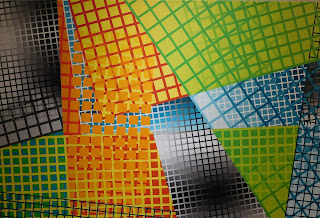A Healing Return
to the Stage from the Canton Symphony Orchestra
By Tom Wachunas
“Wisps of cloud and mist, are lit from above, breeze in the foliage and wind in the reeds, and all is scattered.” - from first part of Faust, the lyric poem by Johan Wolfgang von Goethe, and the inspiration for the third movement of Felix Mendelssohn’s Octet for Strings
Reasons to be cheerful: They’re back! The May
23 concert by the Canton Symphony Orchestra (CSO) marked the first time in more
than a year that the ensemble has performed live at Umstaddt Performing Arts
Hall. This occasion was certainly an important step on the road back to
cultural “normalcy” as we recover from the dreadful pandemic shutdown.
For a May 21
article by Ed Balint in The Repository (Canton’s daily newspaper), CSO
president and CEO Michelle Charles said of the concert, “That's what we do,
that's what we love and that's why we exist, to perform music live. You do take
for granted how readily available (classical music) is until it's not. So I
think it's going to be very emotional." Noting that the concert was especially significant
to Gerhardt Zimmermann, CSO music director and conductor since 1980, she added,
"It's been so long, and Canton has held a special place in his heart for
many, many years. I think it's going to be more emotional for him than
anyone." The emotional factor becomes even more resonant when considering
Zimmermann’s own battle with coronavirus which led to weeks of hospitalization
and rehabilitation in 2020. He’s still not at optimal strength, and
consequently conducted the program while seated on a raised platform.
This short concert
(with no intermission) was an altogether unique sensory experience, and not a
CSO business-as-usual affair. Zimmermann chose just two works to be on the
program: Felix Mendelssohn’s Octet for Strings, and Wolfgang Amadeus Mozart’s
Symphony No. 29. Covid protocols were in place. Umstattdt Hall, a 1,400- seat
venue, felt eerily empty as the audience was limited to a total of 300
attendees, most seated in socially distanced manner, and all required to wear
masks, as were the musicians spaced widely across the stage.
From the very start
of Mendelssohn’s grand Octet, the palpable esprit de corps between
Maestro Zimmermann and the ensemble (four violins, two violas, two cellos) was a
pleasure to behold - inspired and inspiring. At once fiery and flamboyant,
delicate and precise, the vigorous sound emanating from this small group during
the first movement (and for that matter the entire work) was a warm embrace of
the inventive composer’s youthful panache, and his instructions that the work
“…be played by all the instruments in a symphonic orchestral style. Pianos and
fortes must be strictly observed…” Mendelssohn’s Octet is a masterpiece calling
for virtuosity from all the players to varying degrees, but none more so than
from the first violin. Here, the vibrant playing by Emily Cornelius was
exquisite. Her arpeggios often soared to ravishing heights above the intricate
syncopations and lovely harmonies being crisply articulated beneath.
Pausing after the
long first movement, Zimmermann turned briefly to the audience and with a broad
smile said, “How sweet it is.” Then it was on to the gentle textures and beautiful
phrasing of the lyrical Andante movement, followed by the bewitching Scherzo,
seemingly transporting us to a magical forest wherein nocturnal spirits scurry
about. And finally, the robust fourth movement Presto. Here was a
dazzling, ebullient romp, truly symphonic in scope, first announced by the
cellos, then quickly rippling through the whole ensemble at a furious tempo with
an explosive, infectious energy.
That same spirit of
infectious energy was present in a rousing performance of what is widely considered
to be Mozart’s first symphonic masterpiece, his Symphony No. 29. Though originally
scored for a smaller-scaled orchestra (here there were 29 instruments including
strings, a pair of oboes and a pair of French horns), the CSO dispatched all of
Mozart’s vigor and lyricism, his melodic grace and frolicsome wit, with
impressive clarity and robust sonority, all of it bringing a very grateful
audience to its feet.
In his brilliant
virtual pre-concert lecture, Professor MJ Albacete noted that both works on
this program were written when the composers were astonishingly young - Mendelssohn was 17 years old, Mozart was 18 -
and were of major importance in their respective aesthetic evolutions. Further,
he offered this moving personal observation about what he called a subliminal connection
between the works and their symbolic meaning for our current time and
circumstances: “Both begin in joy, descend into a period of serenity – you
might even say melancholy – but revive with hope and expectation and conclude
with a sense of triumph and rejoicing, returning to the way things were not so
very long ago. Great music can also be a remedy for the spirit and the soul. So
may it be for all of us in the days and weeks to follow.”
How sweet it is
indeed.









